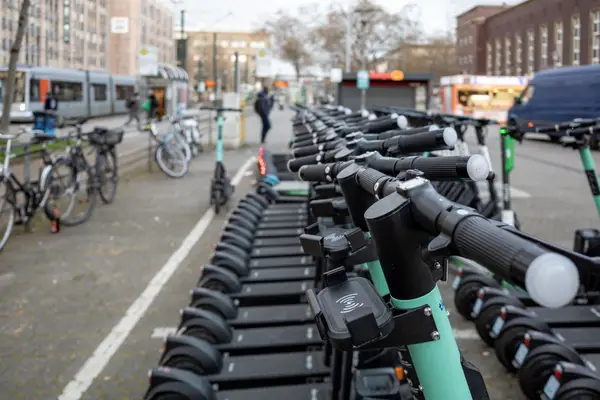Short-distance options for transportation have been available for centuries, and in recent years, micromobility trends have grown to better integrate these solutions into everyday life. In some cities, it’s an intentional movement to add cycling lanes. Globally, options are being developed and integrated that are incredibly futuristic and innovative.
From mixed reality in automotive to more purposeful charging solutions, these are five areas that the future of micromobility is expected to grow in 2023.
Hubs for micromobility vehicles
If there’s a way to get around a neighborhood or city that would fall under the category of micromobility vehicles, you might soon be able to find it in a centralized location. Imagine an airport car rental section but without the customer service agents, the paperwork, or the wait. And instead of cars, options could include pedal bikes, e-bikes, scooters, or even e-skateboards. Throughout your community, micromobility hubs can offer a host of options in a small footprint, with your smartphone as the key to each service.
Further integrating MaaS
Mobility-as-a-Service (Maas) focuses on a smartphone’s capacity to access shared mobility options, and in as few steps as possible to promote engagement. In the coming months and years, the smartphone will become even more central in micromobility solutions by overlaying waypoints, charging stations, and vehicle locations onto common mapping apps. Of course, the goal continues to be an ultra-convenient, cost-effective solution for short-distance travel.
Solar powered charging
Currently (pun intended), charging stations for electrified automotive and mobility services hinge on access to a city’s electrical grid, often requiring more power than several households. It restricts locations, but for micromobility options with lesser demand for power, solar power offers a great solution. Bus shelter-style charging stations with solar panels atop allow them to be placed much more flexibly, and they double as a kiosk too. And as both battery materials and solar panels advance and become more efficient, this type of charging station is even more desirable.
Adding in mixed reality
The issue of “scooter litter” has become prevalent in some cities that have embraced micromobility, whereby e-scooters and other shared micromobility options are left where they shouldn’t be. Of course, it leads to losses, annoyances, and potentially dangerous situations, but mixed reality has sprung into the limelight as a way to correct it.
For instance, Bird is now testing mixed reality to ensure users are returning their machines to an approved location. When they arrive at their destination, the rider is prompted to lift their phone and scan the area for a place to leave the scooter. The session will only end when the scooter is returned somewhere approved within the app.
Refined geofencing
Automotive technology solutions used for some time include geofencing, and it’s being further refined in the micromobility space. The primary use has been to keep riders within a ‘fenced’ area – for example, not leaving a 5-mile radius. However, regulations surrounding micromobility vehicles are emerging for both the rider’s safety and that of other motorists, and refined geofencing aims to bridge the gap.
App developers and others like Star consulting services are identifying how to ensure the rider is operating where they should be – in a bike lane or on the sidewalk, for example – and restricting the vehicle’s movement when they’re not. It’s a matter of precisely locating the user with GPS, cell signal, and other digital means.
Micromobility solutions are expanding rapidly. Some trends are new developments that grow the space while others are course corrections to address issues arising as a result of implementation. Moving forward in 2023 and beyond, expect micromobility to take a more central role in transportation for the masses.
